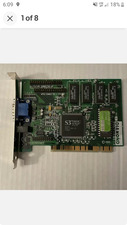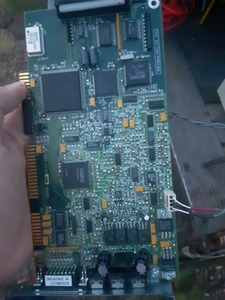Enchurito wrote on 2021-10-05, 01:31:
So I looked through my sound card collection and this is what I found.
An ESS that has 1868f on the chip and 1853L/1857L on the board (this was in the 486 acer when I got it).
This should be the first card. As already stated, it's bug- and hassle-free SBPro2 and MPU-401. Just init the PnP (Unisound...) and go.
All you're missing is real OPL3 (although ESFM is well-liked and sounds 'close enough' for most purposes) and 16b sound with better compatibility than AudioDrive (which few titles supported)
As far as creative cards I have CT4520, CT4500, CT2940 (this one is extremely dirty and might not work).
The CT45xx cards are interesting as a second card as they give you AWE MIDI in supported titles and native SB16 support.
I also have some soundblaster live cards, and an audigy 2 but they would be too new for this project.
If you hadn't had the ESS1868 they would have been an option for the MIDI solution, but totally not needed here. Stick the Audigy2 in the Athlon.
I also found a Media Vision pas16sl model 650-0032, this has a yamaha opl chip on it. As far as condition, this one is nearly flawless and was sitting new in a bag along with a sony cd drive and the cable to hook them to each other.
Now that's an interesting card - the card that forced Creative's hand and made them release the SB16 in an essentially unfinished state (hence so many different versions that were essentially prototypes released to production).
The good:
Real OPL3
Really, really good sound quality/low noise
The bad:
PAS16 native support is limited.
No SB16 support, only original SoundBlaster support (mono).
Same MIDI hanging note bugs as on the SB16
I was a bit underwhelmed at first when I tried my PAS16. If support is present, it doesn't sound any different to the best SB16 models. If not (frequently the case) you're stuck with old SB mono. But that's not the fair comparison. If you run it head-to-head with a CT1740 (early SB16 so its direct competitor - and noisy as hell) the difference is obvious.
Which would be the best choice?
At least two of the above.
Despite my sympathy for the PAS16, unless you have key titles with native PAS16 support, and/or you really, really want real OPL3 over and above SB16 support, I'd go for the ESS1868 with one of the AWE64 cards.
You could consider all three, but that could well turn into a resource hell, forcing you to use unusual settings not supported by most games.

